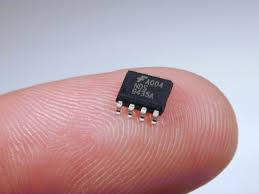_ Department 🔬 laboratory (propagation and expansion of nanochips)
The growth mechanism of nanotubes to produce a kind of nanochips
Researcher and author: Dr. ( Afshin Rashid)
Note: In nanoscience, especially nanoelectronics, carbon nanotubes are of great interest for the production of nanotransistors and nanochips due to their unique properties such as elasticity, conductivity, and high strength. The production methods of these nanostructures are divided into two general categories of methods based on solid carbon and gaseous carbon.
Two common points in nanotube production methods are based on solid carbon source, such as laser abrasion, electric arc discharge and the use of high temperature environment (between 0111 and 0111 K) and erosion of solid graphite as a carbon source.
Despite these commonalities, the morphology, morphology of carbon nanostructure and production efficiency of carbon nanotubes are significantly different according to the experimental conditions. Before the advent of carbon nanotubes, fullerene was produced using these methods. The production of carbon nanotubes requires the presence of a catalyst in addition to the conditions required for the production of fullerene at high temperature and the absence of oxygen.
The degree of ionization in nanotubes to produce nanotransistors - nanochips
Various mechanisms such as the separation process of carbon molecules and the recombination of atoms etc. are involved in these high temperature methods. The main mechanism of these methods is the transfer of energy from the external radiation source of a laser beam or solar radiation to the target material. This leads to the erosion of the target material and subsequently the formation of plasma. The degree of plasma ionization highlights the importance of energy transfer between the plasma and the target material. The characteristic of plasma and especially the temperature range and concentration of different species in plasma depends not only on the nature and composition of the target substance but also on the amount of transferred energy.
For the production of nanotransistors and nanochips, one of the advantages of these methods is the ease of changing the process parameters and achieving optimal conditions for the production of carbon nanotubes. A major challenge of these methods is the impurities in the products. Carbon nanotubes are produced together with other carbon phases and the rest of the catalyst. Most of the existing purification methods are based on oxidation, like acid-based methods, which will affect the structure of single-walled nanotubes. A desirable approach for purification is to heat the material at 0011° under a neutral atmosphere.
Methods of producing nano-transistors and nano-chips with laser abrasion
The graphite plate containing the catalyst is placed in the middle of the quartz tube containing neutral gas (such as helium and argon). Then this system is placed in the oven with a temperature of 0.11 degrees. The laser beam is focused on the graphite plate and leads to uniform surface evaporation. The carbon vapor is swept by the neutral gas flow and deposited on various surfaces including the water-cooled copper collector, the quartz tube wall, and the end of the graphite plate The applied power depends on the nature of the target and the surrounding environment. For example, the solid target can be heated, melted or evaporated depending on the applied power. So far, several approaches have been made to improve the efficiency of carbon nanotubes and nanotransistors by laser wear. Is.
Researcher and author: Dr. ( Afshin Rashid)
Specialized doctorate in nano-microelectronics






